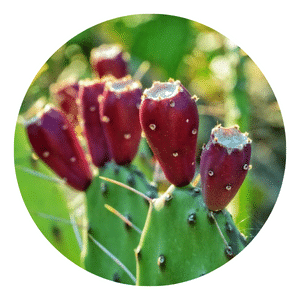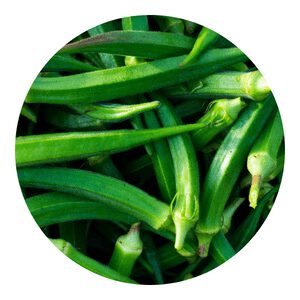How To Grow Prickly Pear
The prickly pear is a type of cactus that is native to North America. It is also known as the cactus pear or the Indian fig.
The plant produces a fruit that is eaten fresh or made into jams and jellies.
The prickly pear has a long history of being used as a food source by Native Americans.

Prickly Pear Menu
What is a prickly pear?
A prickly pear is a fruit-bearing cactus that is native to the Americas.
The plant has spines on its leaves and stems, which protect it from predators.
The fruits of the prickly pear cactus are edible and have a sweet, juicy flavor.
The prickly pear cactus is a member of the Cactaceae family, which includes about 1,500 species of cacti.
The plant grows in arid regions and is adapted to survive in harsh conditions.
Prickly pears are a popular food in many parts of the world, including Mexico and North Africa.
The fruits of the prickly pear cactus can be eaten fresh or made into jams, jellies, and other preserves.
The cactus pads can also be cooked and eaten as vegetables.
History: where do prickly pears come from?
Prickly pears are a type of cactus that produces edible fruit. The plants are native to the Americas, but they have been introduced to other parts of the world as well.
Prickly pears were first brought to Europe by Spanish explorers in the 16th century. They were later introduced to Africa and Asia by European colonists.
Today, prickly pears are grown in many countries around the world.
The fruit of the prickly pear cactus is often eaten fresh or made into jams and jellies. The pads of the cactus can also be cooked and eaten like vegetables.
In some parts of the world, prickly pear juice is used to make alcohol.
How to grow prickly pear?
Prickly pear is a type of cactus that produces an edible fruit.
The fruit is often used in jams, jellies, and other sweet dishes.
Prickly pear can be grown in the home garden with proper care.
To grow prickly pear, start with a young plant from a nursery or online retailer.
Choose a spot in full sun with well-drained soil. Plant the cactus in a hole that is twice as wide as the root ball. Water the plant deeply after planting.
Allow the soil to dry out completely between waterings. Apply a balanced fertilizer once every two weeks during the growing season.
Prickly pear cactus will need to be protected from frost during the winter months. Bring potted plants indoors or cover them with a layer of mulch.
Outdoor plants will require less water during the winter months.
The Grow Organic prickly pear Is a free guide that will show you how To grow this delicious fruit Organically, so you can be sure That it is pesticide free. With clear instructions and pictures, This guide is all you need To grow your own organic prickly pears!
Chappy The Gardener
Benefits: what are the benefits of eating a prickly pear?
Prickly pear, also known as cactus fruit, is a popular ingredient in many Latin American dishes. It is also known for its many health benefits.
Prickly pear is an excellent source of fiber and vitamins C and K. It also contains a good amount of magnesium, potassium, and copper.
Prickly pear has a variety of health benefits. One of the most important is that it can help regulate blood sugar levels.
This is especially important for people with diabetes or prediabetes.
Prickly pear can also help lower cholesterol levels and reduce inflammation throughout the body.
In addition to its many health benefits, prickly pear is also a delicious and versatile ingredient.
It can be used in sweet or savory dishes, and its unique flavor pairs well with both fruits and vegetables.
Can I Grow a Prickly Pear Cactus Indoors?
Prickly pear cactus can be grown indoors if you have a sunny window where they will get at least six hours of direct sunlight per day.
They prefer warm temperatures and well-draining soil.
How Long Does a Prickly Pear Cactus Live?
Prickly pear cacti can live for up to 100 years.
However, the average lifespan of a prickly pear cactus is between 20 and 30 years.
Prickly pears are not very susceptible to disease or pests, which contributes to their long lifespan.
Prickly pear cacti are drought tolerant and can survive with very little water.
They do best in full sun but can also tolerate partial shade.
Prickly pears need well-drained soil and should be fertilized once a year.
How long does it take to grow a prickly pear?
If you’re thinking of adding a prickly pear to your home landscape, you may be wondering how long it will take before the plant bears fruit.
Prickly pears are a type of cactus that produces edible fruit.
Depending on the species, prickly pears can take anywhere from 2 to 8 years to mature and produce fruit.
Prickly pear cacti are native to the Americas and have been cultivated for centuries.
The plants are easy to care for and can tolerate neglectful watering schedules.
They can be propagated from seed or cuttings, and will begin bearing fruit 2-3 years after planting.
While most prickly pear species take 4-8 years to reach maturity, there are a few varieties that will bear fruit sooner.
What is the Best Soil For Prickly Pear Cactus?
The best soil for growing prickly pear cactus is sandy loam or gravelly loam.
The soil should be well-drained and have a pH level between 6.0 and 7.5.
The cactus does not need a lot of fertilizer, but it should be fertilized twice a year with a low-phosphorus fertilizer.
Organic fertilizer for Prickly Pear Cactus
Organic fertilizer is the best way to ensure your prickly pear cactus gets the nutrients it needs.
Here are a few tips on how to choose and apply organic fertilizer for your cactus.
When selecting an organic fertilizer, make sure it is specifically designed for cacti and succulents.
You can find these at most garden centers or online.
Apply the fertilizer around the base of the plant, taking care not to get any on the leaves or stems.
Water the plant well after applying fertilizer.
Fertilize your prickly pear cactus every two to four weeks during the growing season.
Reduce fertilization to once a month in winter when growth slows down.
Is Prickly Pear Cactus easy to grow?
Prickly pear cactus is a popular plant to grow because it is easy to care for and is drought tolerant.
The plant does best in full sun and well-drained soil. It is important to water the plant regularly during the first growing season to help it establish a deep root system.
Once established, the plant needs very little water.
Where does prickly pear grow best?
Prickly pear cacti are a type of cactus that produces a fruit called a tuna. Thetunas are often used in jams, jellies, and beverages.
Prickly pears grow best in hot, dry climates with little rainfall. They can be grown in sandy or rocky soil and prefer full sun. Prickly pears can be propagated from seed or cuttings and will begin to produce fruit after 3-5 years.
Prickly pears (Opuntia species) are a type of cactus that produces a fruit called a tuna. Thetunas are often used in jams, jellies, and beverages.
Prickly pears grow best in hot, dry climates with little rainfall. They can be grown in sandy or rocky soil and prefer full sun.
Can prickly pear survive winter?
In the depths of winter, it can be hard to believe that anything green and growing could survive the cold.
But some plants are tougher than they look. Prickly pear is one of these plants.
Prickly pear is a type of cactus that is native to warm, dry climates like those found in parts of Africa, Asia, and the Americas.
Despite its exotic origins, prickly pear can actually do quite well in winter weather – as long as you take a few precautions.
Here are some tips for helping your prickly pear survive the winter:
• Bring your plant indoors. If you live in an area with very cold winters, it’s best to bring your prickly pear inside for the season. Put it in a bright spot near a window and water it sparingly.
• Protect your plant from frost.
Recipes: how can you incorporate prickly pears into your cooking?
Prickly pears are a type of cactus that produces fruit. The fruit is often used in Mexican cuisine, and it can be incorporated into a variety of dishes.
Here are some ways you can use prickly pears in your cooking:
-Add them to salads for a unique and flavorful addition.
-Puree the fruit and add it to smoothies or frozen drinks.
-Make a jam or jelly with the fruit and use it on toast or as a topping for desserts.
-Skewer the fruit and grill them as an appetizer or side dish.
So, next time you’re at the market, pick up some prickly pears and get creative in the kitchen!
Ingredients:
-1 cup uncooked white rice
-1 can black beans, drained and rinsed
-1/2 cup chopped cilantro
-1/2 teaspoon chili powder
-1/4 teaspoon cumin
-juice of 1 lime
-1 tablespoon olive oil
-1/4 cup diced onion
-1 clove garlic, minced
-1 prickly pear, peeled, seeded and diced
Instructions:
1. In a medium bowl, combine the rice, black beans, cilantro, chili powder and cumin.
2. In a small skillet over medium heat, heat the olive oil.
Add the onion and garlic and sauté until softened. Add the rice mixture to the bowl and stir to combine.
3. Stir in the prickly pear and serve warm.
In conclusion,the prickly pear is a great plant to grow for many reasons. It is easy to care for, drought tolerant, and provides food and shelter for wildlife.
Prickly pears are also a valuable source of food and medicine for humans.
So whether you are looking to add some beauty to your landscape or want to create a more sustainable homestead, consider growing prickly pear cactus.
Click To Grow
Helps Us Grow – Share If You Like
















